Explore Articles Filed Under: The Amazon
The attack took place at the tourist lodge, at night, when doña María was sleeping. She tried to get out of bed to urinate, but, when she got up, she fell to the floor, partially paralyzed, unable to move. She cried for help. One worker came, but he was not strong enough to move her. Eventually, with the help of the gringo owner, she was lifted back onto the bed. “She was just like dead weight,” the owner later told me. “It was all I could do to get her up to her bed myself.”
Among ribereños in the Upper Amazon, there is a body of traditional lore regarding both the uses and the administration of a relatively large number of Amazonian medicinal plants. My jungle survival instructor, Gerineldo Moises Chavez, who made no claims at all to being a healer, knew dozens of jungle plant remedies, including insect repellants, treatments for insect bites, snakebite cures, and antiseptics. While mestizo shamans claim to have learned the uses and administration of their medicinal plants from the plant spirits themselves, it is also true that their uses of the plants are, in most cases, consistent with widespread folk knowledge about the plants.
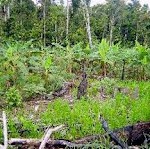
Of central importance in ribereño life is the chacra, the swidden or slash-and-burn garden. This is true also of many Amazonian peoples, for whom gardens — and garden magic — are a central feature of the domestic economy. A chacra is made by clearing an area of forest, burning the felled trees and other vegetation, clearing the movable remaining vegetation and reburning it, and then planting yuca, manioc, cassava (Manihot esculenta), plátano, plantain (Musa paradisiaca), and other cultivated plants and trees such as beans, palms, pineapples, papaya, and mango.
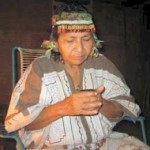
There are relatively few women shamans in the Amazon, and certainly few among the mestizos. On the other hand, my teacher doña María Tuesta said that she had encountered very little prejudice because she was an ayahuasquera. There were some shamans who have said that she should not be a healer, but — in her typical way — she said that those were all stupid people with no shamanic power anyway. Still, her vocation is rare.
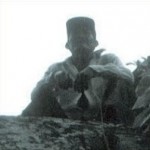
I had promised myself that I would not talk about canaima. Now, I have been a lot of places in my time, and I have seen some very weird things. But there are really only two things that I find truly creepy — tsantsa, shrunken human heads, and canaima. And that is because, I suppose, both tsantsa and canaima are supposed to be creepy. That is their purpose — to create horror and fear.
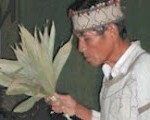
Two rhythmic instruments are used in shamanic performance in the Upper Amazon — the shacapa, the leaf-bundle rattle; and the maraca, the seed-filled gourd rattle. Whether shacapa or maraca, rattles are the most important shamanic tool in the Amazon — the equivalent of the shaman’s drum elsewhere. Anthropologist Lawrence Sullivan, in his work on the history of religion in South America, calls them the paradigm of sacred sound, the epitome of the link between sacred sound and shamanic power; ethnographer Alfred Métraux descibes them as the most sacred object among the tropical tribes of South America; anthropologist Jacques Chaumeil says that, among the Yagua, the rattle is held to be the voice of the spirits. As my teacher doña María Tuesta put it, in her typical way, “My shacapa is my pistola.”
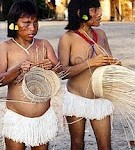
Rainforest environmentalism is eager to see the rainforest native as sharing the putative purity of the rainforest — closer to nature, less affected by the evils of the world, demonstrating the integrity of the unspoiled. The native of the rainforest is a monolithic figure, the keeper and companion of the plants and animals, an instrument to criticize our own civilization. That purity becomes associated with a wisdom we once had but have lost, and which we need to recover in order to rebuild what our technology has destroyed. The wisdom of the rainforest stands ready to be reappropriated by the dominant culture.
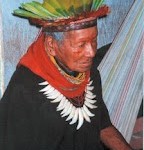
Shamans in the Amazon are not unaware of the problems brought about by their encounter with global modernity. On June 1 through 8, 1999, forty of the most prominent traditional healers from seven indigenous peoples convened in Yurayaco, Colombia, to hold an Encuentro de Taitas, a Meeting of Shamans, and to discuss the future of traditional medicine. One result of that meeting was the publication of two documents — a Código de ética de la medicina indígena del piedemonte Amazónico Colombiano, Code of Ethics of Indigenous Medicine of the Foothills of the Colombian Amazon, and the Declaración del Encuentro de Taitas, Declaration of the Meeting of Shamans, often called the Yurayaco Declaration.

Mestizo shamans often mix additional ingredients into the basic ayahuasca drink. In addition to the ayahuasca (Banisteriopsis caapi) and its companion chacruna (Psychotria viridis), chagraponga (Diplopterys cabrerana), or sameruca (Psychotria carthaginensis), some shamans may, at different times, add plants that are believed to modulate the experience of the drink in some way.

Amazonian sirenas, mermaids, look just like the mermaids of the classical European imagination — beautiful blond women with the tail of a fish, sometimes with several fish tails, who have melodious voices and hypnotic eyes, and who live in caves beneath the waters. They travel on boas. Indeed, sometimes they turn into boas; if the woman sleeping next to you turns into a boa during the night, that is a good sign that you have been seduced by a mermaid.

Discussing the article:
Hallucinogens in Africa